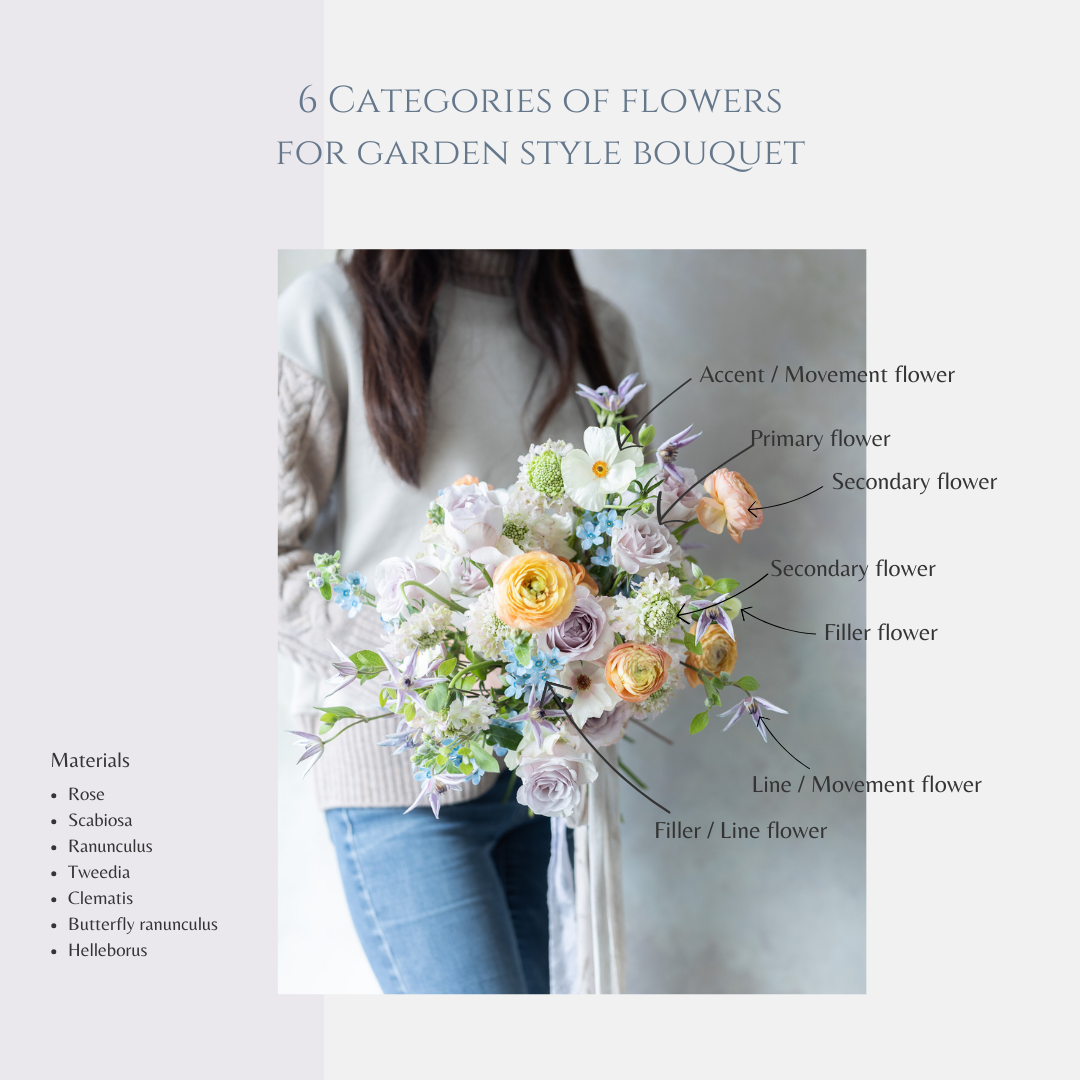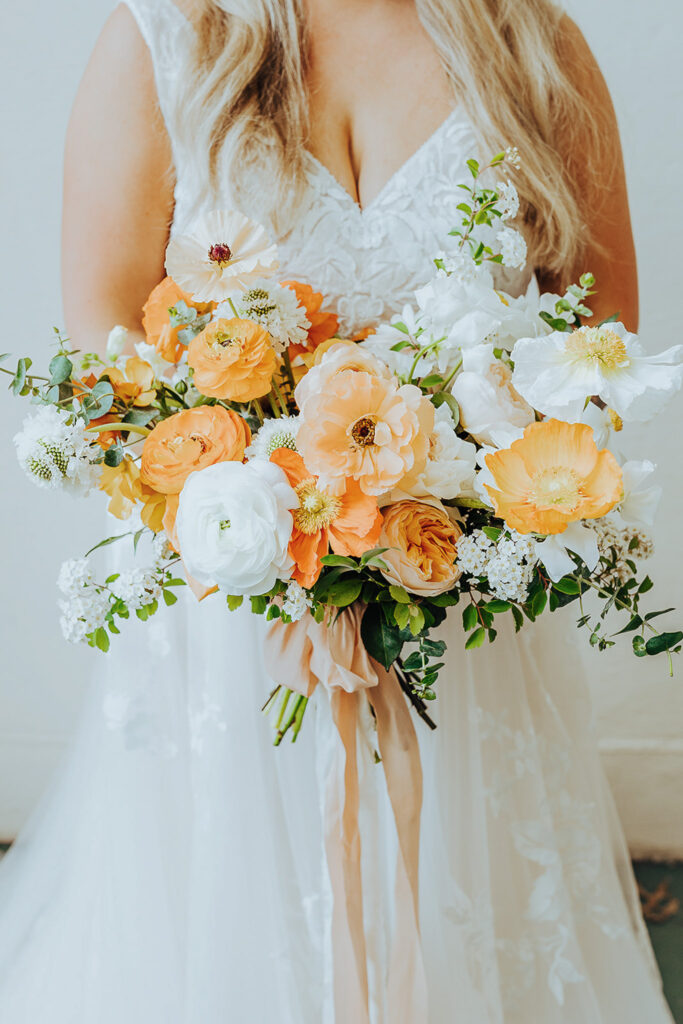About
Blog
Stemslider
Workshops
Bouquet Recipes
Shop
New mini-StemSlider: 15% off with Bundless & FREE Vase & Engraving✨
Browse around
topics
Hello Everyone!
floral designer + educator
I'm Koko
I'm floral designer, gardener and your flower bouquet coach. I'm so glad you're here. Let's enrich your bouquet skills together! Read my story
6 Categories of Flowers For Loose and Airy Garden-Style Wedding Bouquet

Posted In
February 8, 2024
Posted On
When I had a workshop, I provided the participants with a list of flowers that we were going to use to create a bouquet. One floral designer asked me if this is the typical list I use for making wedding bouquets.
I realized that sometimes it’s not obvious how many types of flowers other fellow florists use to create a loose and airy garden-style wedding bouquet.
In this article, I would love to talk about the types of flowers that I normally use for a garden style wedding bouquets.


Different categories of flowers
As you may already know, there are different categories of flowers, typically ranging from 4 and up like Mass flower, Form flower, Filler flower, Line flower, and the way to discribe about the categories slightly different depending on florists.
I prefer to use the 6 categories below in my designs:
- Primary flower: Large blooms that immediately catch the eye, like Garden Rose, Rose, Dahlia, Peonies, Gerbera, or double Tulip.
- Secondary flower: Smaller versions of main flower, such as Ranunculus, Anemone, Tulip, Scabiosa, Daisy, small Dahlia, or Zinnia.
- Filler flower: Clusters of small flowers on each stem that fill the spaces between other flowers, like Helleborus, Phlox, Spray Rose, Sedum, Astrantia, Hyacinth, Aster, or Berries.
- Line flower: Flowers with long stems that create elegant lines, especially in the outer areas, such as Delphinium, Larkspur, Astilbe, Sweetpea, Snapdragon, or Foxglove.
- Movement flower: Flowers with a soft, fluffy movement when touched, providing a gentle flow to the bouquet. Examples include Butterfly Ranunculus, Cosmos, Clematis, Sweetpea, or Feverfew.
- Accent flower: Special flowers that add a unique touch with just one or two stems, like Orchid, Gardenia, Eucharis, Nerine, large Clematis, Protea Blushing Bride, Poppy, or just beautiful grass.
When designing the loose and airy garden style bride’s bouquet, I typically begin with six different categories of flowers: one primary flower, two secondary flowers, one line flowers, one filler flower, and one movement flower (or accent flower).
However, the filler flower might sometimes act like line flowers, such as Tweedia, or line flowers can function as filler flowers, like Astilbe. This is an idea of how I start designing a garden-inspired bouquet, and sometimes I don’t include line flowers at all, or I use two primary flowers like garden roses and dahlias.

It depends on the shapes of flowers and the style that your clients want, but mixing the six different categories of flowers will surely achieve the loose and airy garden style. And incorporating a movement flower is also key, adding them in outer area of bouquets helps to give a fluffy and dreamy look! 😊
Related
Pin
Share
Leave a Reply Cancel reply
Previous Story
next Story
© 2025 Koko Floral Design, LLC
Join Me on Insta
How to Effortlessly Make a Loose & Airy Cascading Bouquet
I'm so glad you're here. Let's elevate your bouquet-making skill together!